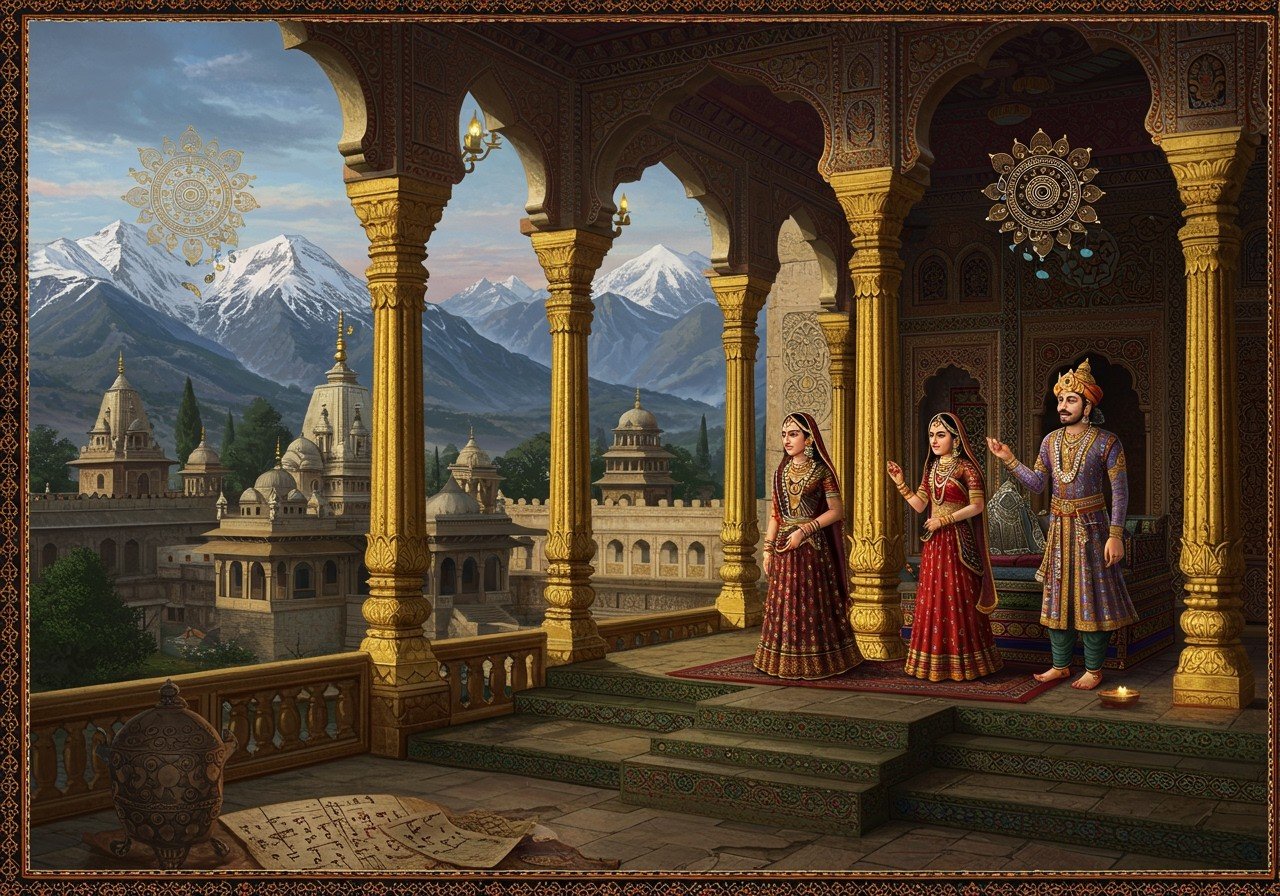
The Lohara Dynasty, a prominent Hindu dynasty, reigned over Kashmir and its surrounding areas from 1003 CE to approximately 1320 CE. Their rule significantly shaped the social, political, and cultural landscape of the region. This article delves into their rich legacy, exploring their origins, notable rulers, contributions, and eventual decline.
Origins and Rise to Power
With the decline of the Utpalas, Sangramaraja seized the opportunity and founded the Lohara Dynasty in 1003 CE. His reign focused on consolidating power and bringing stability to the region. Kalhana’s Rajatarangini, a 12th-century chronicle, details the dynasty’s early history and Sangramaraja’s strategic alliances with neighboring regions to solidify his rule. This era marked a pivotal shift in Kashmiri power dynamics.
Prominent Lohara Rulers
Several rulers shaped the course of the Lohara Dynasty, each leaving their distinct mark:
- Sangramaraja (1003-1028 CE): The founder, he played a crucial role in establishing the dynasty and stabilizing Kashmir after the Utpalas’ decline. His reign laid the foundation for the dynasty’s future growth and influence.
- Harsha (1089-1101 CE): Known for his ambitious projects and cultural patronage, but also for internal conflicts that arose during his rule. This period showcased both the dynasty’s artistic achievements and the political complexities they faced.
- Uchchala (1101-1111 CE): He attempted to restore stability after Harsha’s reign but faced challenges that foreshadowed the dynasty’s decline. His efforts, though commendable, couldn’t fully stem the tide of internal and external pressures.
Cultural and Architectural Contributions
The Lohara period witnessed a flourishing of arts, architecture, and literature. The dynasty is renowned for:
- Temple and Fortress Construction: They commissioned numerous significant temples and fortresses, showcasing their architectural prowess and religious devotion. These structures served as both spiritual centers and strategic strongholds.
- Patronage of Arts and Literature: The Lohara rulers generously supported scholars, poets, and artists, fostering a vibrant cultural atmosphere. This patronage led to the creation of notable literary and artistic works.
- Religious Harmony: The dynasty promoted both Hinduism and Buddhism, demonstrating a policy of religious tolerance and inclusivity. This approach contributed to a rich and diverse religious landscape.
Political and Military Strategies
To maintain control and defend their kingdom, the Lohara rulers employed various political and military strategies:
- Military Engagements: They engaged in conflicts with neighboring kingdoms, including the Ghaznavids, demonstrating their military strength and defending their territorial integrity. These conflicts played a significant role in shaping the region’s geopolitical dynamics.
- Strategic Alliances and Fortifications: They built strategic fortifications and formed alliances to bolster their defenses and protect their kingdom from external threats. This strategic approach helped them maintain their position of power.
- Administrative Structure: They established an effective administrative structure to manage their territories and ensure efficient governance. This system contributed to the stability and prosperity of the kingdom.
Decline and Fall
Several factors contributed to the eventual decline of the Lohara Dynasty in the 14th century:
- Internal Conflicts: Internal conflicts and succession disputes weakened the kingdom from within, diverting resources and creating instability.
- External Invasions: External invasions by neighboring powers further destabilized the region and eroded the dynasty’s control.
- Weakening Central Authority: The weakening of the central authority and the rise of regional powers further contributed to the dynasty’s downfall.
Poojn.in: Connecting to Kashmir’s Spiritual Heritage
Poojn.in, India’s leading online store for spiritual and puja items, offers a wide selection of products that connect you to the rich traditions of Kashmir, including those prevalent during the Lohara Dynasty. Explore our collection of authentic puja items, brass idols, and more to enhance your spiritual practices.
- Brass Idols: Discover beautifully crafted brass idols of deities worshipped during the Lohara period. Explore our collection.
- Puja Items: Find all the essential items for performing traditional puja ceremonies. Browse our puja samagri.
Conclusion
The Lohara Dynasty’s reign, spanning from 1003 CE to around 1320 CE, represents a significant chapter in Kashmir’s history. Their contributions to the region’s culture, architecture, and political landscape remain evident today. Understanding their story provides valuable insights into the complexities of historical evolution and the enduring legacy of a powerful dynasty.
Explore more about Indian temples and historical sites: Kandariya Mahadeva Temple and Shankaracharya Temple.


